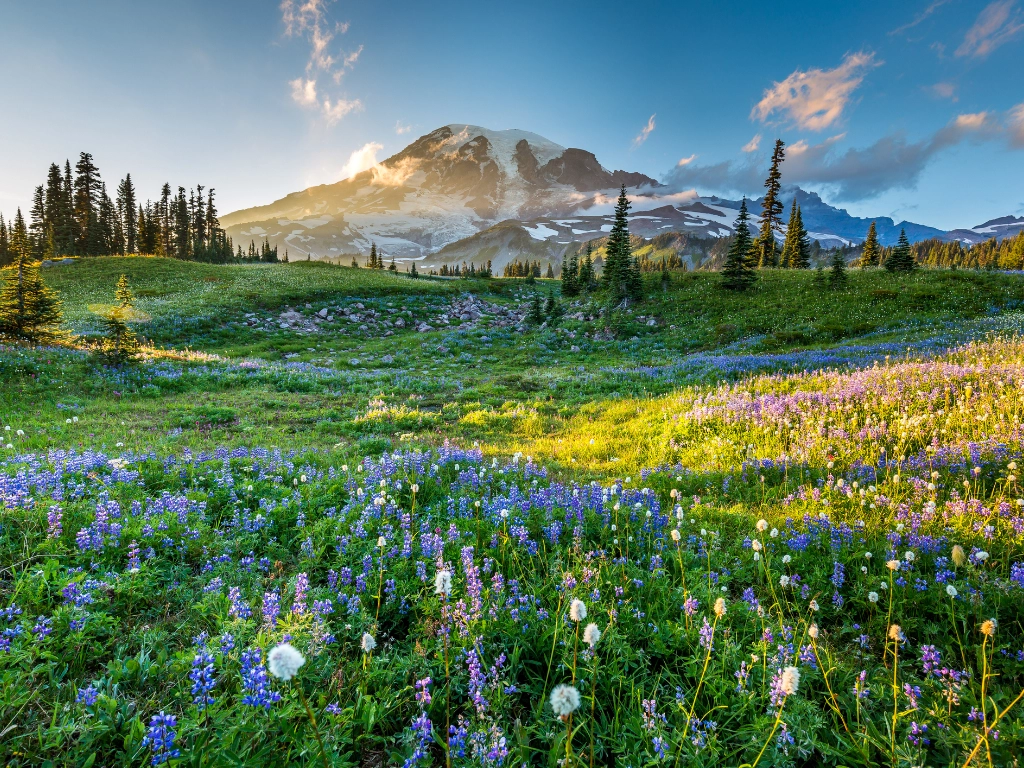Spring has sprung! Flowers are blooming! Birds are singing! Molds are sporing?! Wildfires are raging!?!? Hmmm, perhaps it’s once again time to dig into the National Oceanic and Atmospheric Administration’s (NOAA’s) weather predictions and anticipate how they may affect air quality. Here’s what you’ll see in your climate region over the next 12 months.
Northwest Climate Region (ID, OR, & WA)
Last year, we predicted a warm fall in the southern portions of the region; this turned out to be correct. We also predicted colder winter temperatures in the north, which was correct, albeit not until later in the winter than we thought. We also believed precipitation would be dry-to-average, when in fact it varied chaotically all year. This year, we predict the Pacific Northwest can expect a dry, hot summer and a wet, cold winter.
| Last Year’s Prediction | Last Year Actual | NOAA's Prediction This Year | Our Prediction This Year | |
|---|---|---|---|---|
Summer | Warm | Dry | Warm | Varied | Warm | Dry | Warm | Dry |
Fall | Warm | Varied | Varied | Varied | Varied | Varied | Varied | Varied |
Winter | Varied | Average | Varied | Varied | Varied | Wet | Varied | Wet |
Temperature
June through October, most of this region can expect above-average temperatures. Southern Idaho will experience the worst of it with a nearly 60-70% likelihood of increased temperatures around July.
In contrast, Washington State and parts of Idaho will experience a slightly colder January through March. Expect Puget Sound to dip the furthest below average.
Precipitation
Drought will slowly creep over the region from the south in April and May, and then slowly retreat east August through October. Most of Washington and Oregon should return to the mean by August. Until September, expect the heart of this region (centered on northern Idaho) to remain dry, then become quite snowy starting around January. Hopefully, this will offset the risk of wildfires in May 2026 when the region becomes dry once more.
Air Quality
Keep an eye out for the following weather-induced air quality problems this year:
- Ground-Level Ozone: A hot, dry summer may cause ground-level ozone to build up in urban areas.
- Mold: Mold spores can be expected to proliferate this fall in areas experiencing average or greater precipitation.
- Temperature Inversion: A temperature inversion is a cap of stagnant, cold air that can lock in pollution (such as particulate matter and VOC gases) over a winter city. This region — with its many cities abutting mountains — is particularly vulnerable to temperature inversions during the winter, especially as its winter will be colder than other regions
Northern Rockies & Plains Climate Region (MT, NB, ND, SD, & WY)
We were correct about this region having a dry summer. We were incorrect about just how varied things would get on a county level. Nevertheless, the end-of-the-year mean trotted up to the warm and dry-ish we predicted. Thus, though our months are tentative, we expect the following pattern.
| Last Year’s Prediction | Last Year Actual | NOAA's Prediction This Year | Our Prediction This Year | |
|---|---|---|---|---|
Summer | Warm | Dry | Warm | Dry | Warm | Dry | Warm | Dry |
Fall | Warm | Average | Warm | Varied | Warm | Varied | Varied | Varied |
Winter | Average | Average | Varied | Varied | Varied | Varied | Varied | Varied |
Temperature
Heat will come up from the Southwest this spring but not envelop the entire region until July. Thus, expect the southwestern corners of Montana, Nebraska, and Wyoming to experience the greatest and longest increase in summer heat. The Dakotas will return to average by September, and the entire region (except some counties at the fringe) by November. This will remain the case until April 2026, with the notable exception of a slight February cold snap in MT and ND.
Precipitation
A drought will creep up from the Four Corners states, then center itself over this region, lingering longest over the Dakotas. Expect July to be the driest month. After October, precipitation will return to the mean until next May, when the region will become dry again. The exception is western Montana, which will benefit from Idaho’s wet winter.
Air Quality
Keep an eye out for the following weather-induced air quality problems this year:
- Wildfire Smoke: We predict a lot of wildfires— a prediction supported by how much of this area is already in drought.
- Ground-Level Ozone: A hot and dry summer is the perfect recipe for the build-up of ground-level ozone in this region’s sparse urban areas.
- Airborne Pathogens: Much of the region will have a cold, wet winter. This will likely drive people indoors, increasing the spread of seasonal respiratory pathogens.
Upper Midwest Climate Region (IA, MI, MN, & WI)
Last year, we predicted above-average temperatures until the holidays, with the highest increases in the east. The above-average temperatures didn’t set in until Fall, with the highest increases in the north. We were correct that MI and IA would have a late-summer/early fall dry spell, and that urban Michigan would have a snowy December.
| Last Year’s Prediction | Last Year Actual | NOAA's Prediction This Year | Our Prediction This Year | |
|---|---|---|---|---|
Summer | Warm | Varied | Average | Varied | Varied | Dry | Varied | Dry |
Fall | Warm | Average | Warm | Varied | Warm | Dry | Warm | Varied |
Winter | Average | Varied | Varied | Varied | Average | Wet | Average | Wet |
Temperature
As for this year, Upper Midwest temperatures are predicted to be higher than average until the holidays. Duluth may not really be “climate-proof,” but MN is the exception; it will have an average June and September. This cooler weather might also rub off on parts of Wisconsin. Next spring, things will return to above-average, starting with Michigan’s thumb.
Precipitation
Spring 2026 will be odd, with wetter areas to the east and drier to the west. A dangerous dry spell will torment this region throughout summer and fall. Expect a snowy (or perhaps rainy) winter in 2026. That being said, expect a great deal of variation by county.
Air Quality
Keep an eye out for the following weather-induced air quality problems this year:
- Wildfire Smoke: Expect sporadic wildfires this fall if the weather turns dry.
- Pollen: A warmer year means a longer allergy season. That being said, a longer season can also drive the daily pollen count down.
- Temperature Inversion: Warmer winter temperatures don’t change the fact that this area is already fairly cold. Thus, cities may still need to watch out for winter pollution spikes.
Overall Air Quality Prescription
Each air quality problem has its own unique solution; thus, a multi-layered approach is necessary. ActivePure embodies this multi-layered approach in several ways. First, our signature Advanced Photohydrolysis technology targets airborne pathogens, mold spores, and VOC gases. Second, we have partners that specialize in everything from moldy basements to AI HVAC systems. Finally, many of our purifiers are paired with HEPA filters to address particulate matter and pollen. If you’re looking for a quick and affordable way to protect your indoor spaces, we’ve recently partnered with Allergy Buyers Club to offer our ActivePure Surface & Air Guardian for direct purchase for the first time ever. This four-in-one product combines ActivePure Technology, HEPA, ionization, and carbon to maximize the number of contaminants it works against.
To stay updated on ActivePure’s latest solutions for your home, follow us today.



